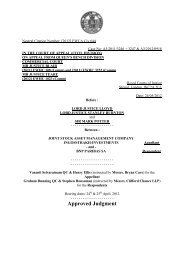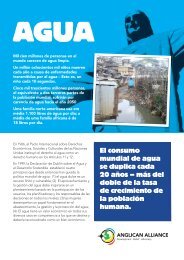Good practice contract management framework - Support
Good practice contract management framework - Support
Good practice contract management framework - Support
Create successful ePaper yourself
Turn your PDF publications into a flip-book with our unique Google optimized e-Paper software.
<strong>Good</strong> <strong>practice</strong> <strong>contract</strong> <strong>management</strong> <strong>framework</strong> Section Two 21<br />
2.10 Applying such a scale would award a risk with a low probability but a high impact<br />
a score of 3 (1 x 3), while a risk with a high probability and medium impact would score<br />
6 (3 x 2). A process such as this can therefore give some overall rating and ranking of<br />
each risk both within a specific <strong>contract</strong> and across a portfolio of <strong>contract</strong>s.<br />
Identifying opportunities for additional value<br />
2.11 In addition to managing risk, the other aim of enhanced <strong>contract</strong> <strong>management</strong><br />
is capturing additional value, above and beyond that defined in the original <strong>contract</strong>.<br />
Additional value generally falls under the headings of service or cost; reputational added<br />
value is more unusual although not impossible to achieve.<br />
2.12 In terms of service, extra value can arise from a supplier providing higher service<br />
levels than expected or specified, at no additional cost. This may have a value to the<br />
customer organisation, although this is not always the case. A 99 per cent service<br />
level may be more than adequate, and achievement of 99.5 per cent may bring no<br />
further value. For example, a call centre reducing the time it takes to answer calls by<br />
five seconds may not even be noticed by the callers.<br />
2.13 A service provided in a different or innovative manner can also bring value to the<br />
customer organisation and may not always have a cost to the supplier. Indeed, there<br />
may be alternative service delivery models that provide a ‘win-win’ opportunity: lower<br />
costs to the supplier and better service to the customer.<br />
2.14 Value improvement through lower costs may come about through <strong>contract</strong>ual<br />
mechanisms, such as benchmarking against market prices, or through negotiation with<br />
the supplier. Cost reduction may also arise from supplier or mutual action that enables<br />
the customer organisation to refine its own internal process or reduce other costs.<br />
2.15 The potential for value improvement in a <strong>contract</strong> can be assessed in a similar way<br />
to assessing the risks. Opportunities need to be identified and then quantified in terms<br />
of their feasibility (similar to the ‘likelihood’ assessment under the risk heading) and their<br />
potential size or impact.



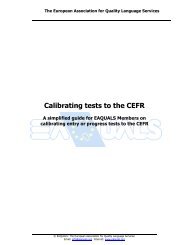
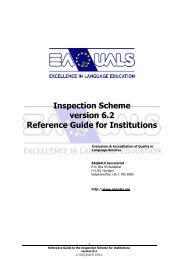
![[2012] UKUT 399 (TCC)](https://img.yumpu.com/51352289/1/184x260/2012-ukut-399-tcc.jpg?quality=85)


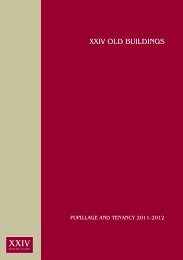


![Neutral Citation Number: [2009] EWHC 3198 (Ch) Case No: CH ...](https://img.yumpu.com/50120201/1/184x260/neutral-citation-number-2009-ewhc-3198-ch-case-no-ch-.jpg?quality=85)
